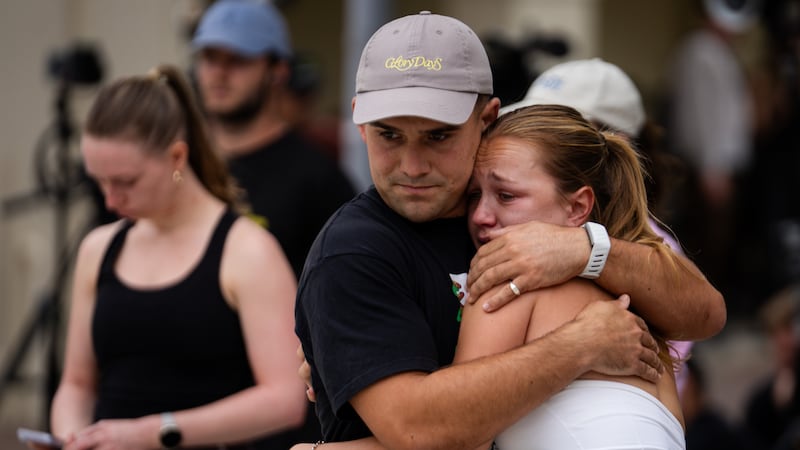Sinn Féin’s emergence as the most popular political force in opinion polls over the past 18 months has fuelled the narrative that the party will inevitably be in government after the next election. This confident assumption is now driving the approach of Sinn Féin and wide sections of the media and has even taken hold in the ranks of the Government parties, where some TDs are seriously thinking of throwing in the towel.
While it is almost certain that Sinn Féin will emerge as the biggest party in the Dáil at the next election if the trend manifested in the polls over the past 18 months is maintained, that is no basis for assuming that the party will automatically be in government.
A detailed analysis of the most recent Irish Times poll tells an interesting story when the composition of the next Dáil is extrapolated from the survey of 1,200 people in their own homes conducted by Ipsos MRBI. For the purposes of the exercise, it was assumed that the next Dáil will have 181 members, rather than the current 160, in light of the terms of reference for the constituency revision which provides for a Dáil of between 171 and 181 deputies.
If the poll figures were replicated at the next election then Sinn Féin would indeed be the largest party in the next Dáil by a significant margin with 63 TDs. On a simple extrapolation of the poll figures, Fine Gael would end up with 40 seats and Fianna Fáil with 38, giving them a total of 78.
What would happen if Russians landed at Shannon and took over the airport?
Simon Harris is facing his first big test. Can he shake off the TikTok Tánaiste image?
At the signing of the Anglo-Irish Agreement, we sensed we were witnessing a historic event
Ireland’s neutrality is widely regarded as a joke. It’s time we got real
However, if the seat bonus that has applied in recent elections is added into the mix, Sinn Féin will stay on 63 seats while Fine Gael would win 45 and Fianna Fáil 40. On the same basis the Greens would get five seats, as would Labour, while Independents and smaller parties combined would end up with 22 seats.
It would appear that Fianna Fáil voters are in tune with party leader Micheál Martin in his forthright opposition to Sinn Féin, by contrast with some in his parliamentary party
If the election turns out anything like that, then Sinn Féin on 63 seats would need to win the support of 28 more TDs to get to a majority in the 181-member Dáil. By contrast, Fine Gael and Fianna Fáil combined would need to get the backing of only six TDs from outside of their own ranks. That would leave the Greens, the Labour Party or a group of regional Independents with the negotiating power to form a new coalition with the two traditional centre parties.
Fine Gael and Fianna Fáil plus either the Greens or Labour would have 90 seats, and the backing of half of the Independent/Others would put them on 95 without either Labour or the Greens. By contrast, Sinn Féin plus the Greens, Labour and half of the Others would still come up short on 85 seats.
On these figures, the only way Sinn Féin can get into government is through a coalition deal with one of the bigger parties. Fine Gael leader Leo Varadkar has ruled out the prospect in emphatic terms and it is difficult to see how Fianna Fáil would be attracted by the prospect of becoming the junior partner of Sinn Féin rather than the equal partner of Fine Gael.
Seat bonus
An important variable that could change the poll extrapolation is whether the two leading parties of government will achieve the forecast seat bonus, as it would require reasonably good transfers between Fine Gael and Fianna Fáil candidates. On occasions in the past, Fine Gael supporters have transferred to Fianna Fáil when the alternative was either Sinn Féin or the hard left, and it is probably safe to assume this will happen next time around.
At this stage in the mid-term of the first Fianna Fáil/Fine Gael Coalition with the Green Party, there is every chance that the parties could win a second term if they continue to govern sensibly
However, doubts have been expressed as to whether Fianna Fáil voters will be willing to transfer to Fine Gael in equal numbers. The poll has some interesting things to say on that score. When the attitude of voters to the various coalition options was probed, the view of Fianna Fáil voters was emphatically in favour of continuing a coalition arrangement with Fine Gael rather than contemplating a deal with Sinn Féin.
A massive 71 per cent of Fianna Fáil voters favoured the Fine Gael option, compared to just 8 per cent who chose Sinn Féin. Remarkably, a bigger proportion of Fine Gael voters favoured a coalition of their party with Sinn Féin, even though it has been ruled out by the leadership.
It would appear that Fianna Fáil voters are in tune with party leader Micheál Martin in his forthright opposition to Sinn Féin, by contrast with some in his parliamentary party who are open to the notion of a coalition with Mary Lou McDonald and her party.
One conclusion from this is that the greener element of the traditional Fianna Fáil support has already abandoned the party and gone over to Sinn Féin. It suggests that the remaining party support, about 20 per cent of the electorate in successive Irish Times polls, is firmly in the centre ground.
At this stage in the midterm of the first Fianna Fáil/Fine Gael Coalition with the Green Party, there is every chance that the parties could win a second term if they continue to govern sensibly. The biggest danger they face is acceptance of the self-fulfilling narrative that they are doomed.














